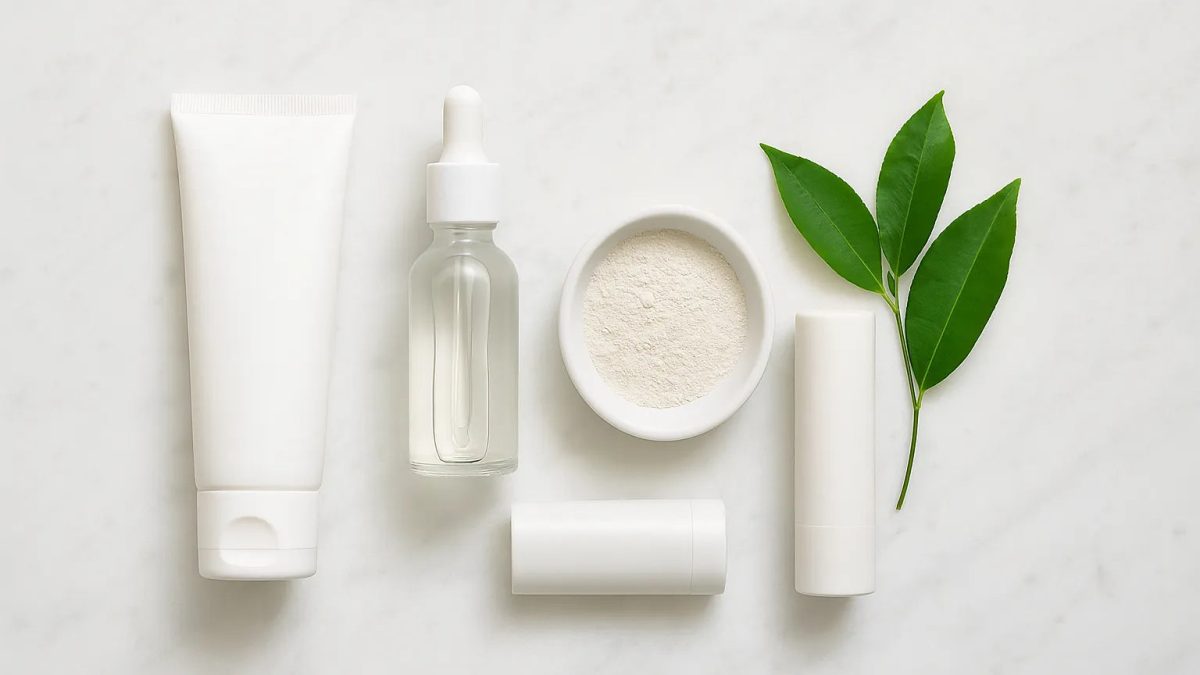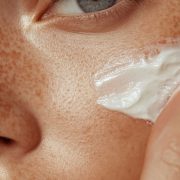Discover what blue light really does to your skin, which ingredients you need to fight digital aging, and five 100% PURE products to build your ultimate defense routine.
Posted on May 11, 2025 Written by: 100% PURE®

You can’t escape screens—laptops, phones, smart lights—all bathing your face in high-energy visible (HEV) blue light. That familiar mix of awe and unease sets in when you realize that beyond screen-induced eye strain, your skin is taking a hit too. The truth is, digital aging (or “screen face”) isn’t just a catchy TikTok phrase—it’s backed by science showing that blue light accelerates oxidative stress, breaks down collagen, and worsens hyperpigmentation (). But don’t get me wrong: you don’t need to abandon modern life and unplug completely. Instead, arm yourself with pragmatic, reflective strategies and the right products. Here’s your complete guide to understanding blue light damage—and five 100% PURE must-haves to fortify your skin.
What Is Blue Light and Why Does It Matter?
Let me explain the fundamentals. Blue light sits at the short-wavelength end of the visible spectrum (around 400–490 nm). Unlike UV rays, which we all know to guard against, blue light penetrates more deeply into the dermis. Over time, studies confirm HEV exposure generates reactive oxygen species (ROS), leading to:
- Collagen breakdown, manifesting as fine lines and loss of firmness
- Elastin fiber damage, causing sagging and texture changes
- Uneven pigmentation, as melanocytes overreact to oxidative stress ()
A 2024 Cosmetics & Toiletries report found that 67 percent of consumers now seek blue light protection in skincare, especially Gen Z, who spend an average of 7+ hours daily on screens (). So yes, blue light matters—and it’s time to fight back.
How Blue Light Ages Your Skin: The Science
-
Oxidative Stress & Free Radicals
Blue light triggers ROS production in keratinocytes and fibroblasts. These free radicals damage cell membranes and DNA, weakening barrier function and accelerating dermal matrix breakdown (). -
Melanin Overdrive
Unlike UV-induced tanning, blue light causes prolonged hyperpigmentation, especially in darker skin tones. Clinical trials show one 4-hour session under typical device light can increase melanin by 8 percent over a week (). -
Barrier Disruption
Continuous blue light exposure alters ceramide and lipid synthesis, making skin more prone to dryness, sensitivity, and inflammation. Over time, your barrier becomes leaky—good luck getting anywhere with hydration if you ignore blue light’s role ().
But that’s just it—you don’t need lab-grade equipment to defend yourself. The right mix of antioxidants, mineral filters, and barrier-supporting ingredients can blunt blue light’s impact and keep your complexion resilient.
Key Ingredients for Blue Light Protection
1. Mineral Shields: Zinc Oxide & Iron Oxide
Physical blockers like zinc oxide and iron oxide sit on top of your skin, reflecting and scattering HEV wavelengths (). Make sure your daily sunscreen or tinted moisturizer contains both:
- Zinc Oxide: Broad-spectrum UV + HEV scatterer
- Iron Oxide: Especially effective at absorbing visible light, minimizing blue light penetration and preventing white cast in tinted formulas
2. Antioxidants: Vitamin C, Niacinamide, & Green Tea
The truth is, antioxidants neutralize ROS before they wreak havoc. Look for:
- Vitamin C (Ascorbic Acid): Potent free-radical scavenger—combines well with ferulic acid for stability ()
- Niacinamide: Supports barrier lipids and calms inflammation
- Green Tea Extract: Rich in EGCG polyphenols with demonstrated HEV-defense properties ()
3. Barrier Reinforcers: Ceramides & Hyaluronic Acid
Strengthen your skin’s natural defenses so that any penetrating radiation has a tougher job. Hyaluronic acid draws in hydration; ceramides lock it in and repair lipid layers.
5 100% PURE Products to Fortify Against Blue Light
- With radiance-boosting green apple and grape, plus alpha lipoic acid (ALA), our formula delivers brightening without irritation.
-
Powered by mineral zinc oxide, this sunscreen provides broad-spectrum UV and HEV defense. Perfect for daily use and reapplication. - Caffeine and antioxidant-rich coffee bean extract boost microcirculation while oat-derived ceramides and hyaluronic acid reinforce your barrier—ideal as a blue-light shielding daytime cream.
- A natural, gentle alternative to retinol, bakuchiol stimulates turnover and antioxidant defenses without irritation—use at night to support barrier repair after your day of screen exposure.
- Made with rose hydrosol to balance pH, reduce redness, and lightly moisturize. Hyaluronic acid delivers a double dose of hydration to quench dry, dehydrated skin and boost glow.
Building Your Blue-Light Defense Routine
Don’t get me wrong—you don’t need a 12-step ritual. Instead, weave these elements into a streamlined, effective routine:
|
Step |
Morning |
Evening |
|---|---|---|
|
1. Cleanse |
Gentle pH-balanced cleanser |
Same cleanser or double-cleanse if wearing makeup |
|
2. Treat |
||
|
3. Shield |
N/A |
|
|
4. Hydrate |
Night cream of choice |
|
|
5. Refresh |
Spritz after makeup |
Optional mist between layers |
Pro Tip: Reapply your mineral SPF every two hours if you’re at your desk all day. Even indoor lighting and office LEDs emit HEV wavelengths.
Beyond Products: Lifestyle & Tech Habits
-
Screen Breaks & Positioning
Take a 20-second break every 20 minutes. Position screens slightly below eye level to minimize direct face exposure. -
Blue-Light Glasses
Consider wearing glasses with HEV-filtering lenses when you know you’ll be glued to devices. -
Ambient Lighting
Dim overly bright overhead LEDs and switch to warmer bulbs in the evening to reduce overall HEV load. -
Dietary Antioxidants
Eating fruits rich in carotenoids (like carrots and sweet potatoes) and polyphenols (berries, green tea) bolsters your skin’s internal defense systems.
Myths & Misconceptions
-
Myth: “Blue light only comes from screens.”
Reality: Sunlight contains even more HEV, so outdoor SPF remains crucial (). -
Myth: “Tinted makeup blocks blue light.”
Reality: Unless it contains iron oxides or mineral pigments in sufficient concentration, most color cosmetics offer minimal defense.
Final Thoughts
In a world where screens are part of our DNA, blue-light protection is no longer optional—it’s a must. The truth is, you don’t have to choose between modern living and healthy skin. With a pragmatic, reflective approach—and the right 100% PURE heroes—you can keep oxidative stress at bay, reinforce your barrier, and maintain that healthy glow.
Remember: small, consistent steps win the long game. Question every claim, read labels carefully, and listen to your skin. That familiar mix of awe and unease can become empowered confidence—because now, you know exactly how to shield your complexion from digital damage. Your most resilient, radiant skin is just a mindful swap away.




